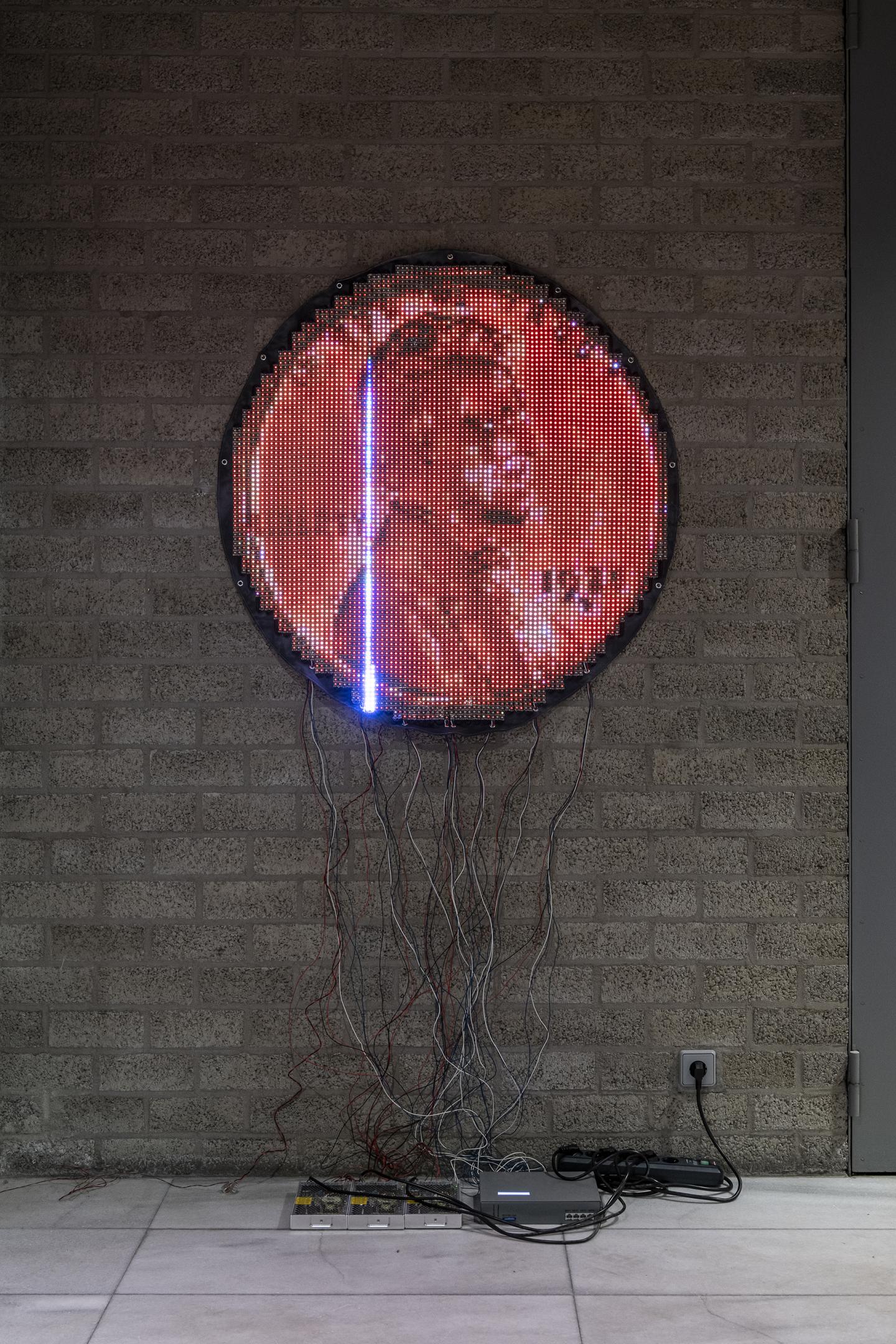The Best Shows to See in Dusseldorf and Cologne
The Rhineland’s new art season kicks off with DC Open
The Rhineland’s new art season kicks off with DC Open


Ei Arakawa, ‘Fees & Nerf’
Galerie Max Mayer, Düsseldorf
4 September – 31 October
Just ahead of DC-Open, Max Mayer relocated his eponymous gallery downtown, from Worringer Strasse to Schmela Haus – a 1960s structuralist building designed by Aldo van Eyck, where he now shares the space with his father, gallerist Hans Mayer. The first show in this new location, ‘Fees & Nerf’ by Ei Arakawa, features a series of the artist’s circular LED canvases (all works 2020), which references past performances and the honorariums he earned from them. Marking a move away from Arakawa’s more usual abstract light designs, these works display the symbol for the relevant currency flickering at a frequency matching the artist’s hourly rate of pay.

Josef Strau, ‘Spirits and Objects ... and How Non-Productive Love is Sometimes Contained in Them ...’
Kunstverein für die Rheinlande und Westfalen, Düsseldorf
3 September – 22 November
Only a stone’s throw away from the Schmela Haus, Josef Strau’s exhibition ‘Spirits and Objects’ addresses the artist’s earlier works without being a conventional retrospective. Focusing on Strau’s decades-long writing practice, the show centres on three large, letter-shaped, cardboard sculptures that viewers can enter in order to watch short films by Keren Cytter, Enzo Shalom and Bernadette Van-Huy based on Strau’s writings (respectively Bohemian in the Mirror, Tears and New Tears and White Nights, all 2020). Alongside these cardboard ‘cinemas’, a selection of 60 text posters, photographs and objects such as lamps and fences (dating from 1991–2020) are scattered throughout the exhibition.

Shannon Bool, ‘Crimes of the Future’
Kadel Willborn, Düsseldorf
4 September – 24 October
Shannon Bool’s ‘Crimes of the Future’ is loosely based on David Cronenberg’s eponymous 1970 science-fiction film, in which almost every woman on the planet has been wiped out. The exhibition’s central work is the titular monumental tapestry (2020) on which digitally rendered outlines of fashion models are filled with photographic details of brutalist sacral architecture (such as Vienna’s Wotruba Church). This interplay between structural elements and moments of human intimacy emerges clearly in Fragments of NOF4 (2020): a solid marble bench onto which Bool has transferred elements from Oreste Fernando Nannetti’s huge etching of astronauts, flying objects and animals, which the self-taught Italian artist carved, over a period of three years (1959–72), into the wall of the psychiatric hospital in Volterra where he was a patient.

‘Gwangju Lessons’
Akademie der Künste der Welt, Cologne
3 July – 27 September
In ‘Gwangju Lessons’ (2020), Christian Nyampeta explores the history of the South Korean city’s 1980s democracy movement to reflect on the relationship between art and community. The installation combines archival ephemera with prints produced by re-appropriating woodblock designs (Scenes From The Revolution, 2020) from the Gwangju People’s Art School (1983–86) – an initiative that encouraged the city’s inhabitants to attend printmaking courses to overcome the trauma of the 1980 May uprising in which hundreds of students and pro-democracy protestors were killed by government troops. Teaching techniques that could be used to produce pamphlets and posters, the courses offered a safe space for participants to express themselves. This participatory moment re-occurs in ‘Gwangju Lessons’: visitors can reprint Nyampeta's panels and take them home.

Berenice Olmedo ‘CsO, haecceidad’
Jan Kaps, Cologne
4 September – 7 November
The work of Berenice Olmedo reflects upon the impairment of bodily function – a theme she translates into sculptural language through arrangements of used prostheses and other medical aids. Her second exhibition at Jan Kaps, ‘CsO, haecceidad’, references Gilles Deleuze and Félix Guattari’s theory, from Capitalism and Schizophrenia (1972/1980), of a ‘body without organs’ – an entity free of imposed organization – that Olmedo connects back to the human form. The centrepiece of the exhibition is ‘CsO, haecceidad’ (2020), a series of polyurethane forms with attached plastic pouches. Frequently inflated, the sculptural installation creates an intriguing dialogue between human and artificial bodies.

Tomasz Machciński, ‘With Love to Tommy’
Delmes & Zander, Cologne
4 September – 24 October
This exhibition by Polish autodidact photographer and performer Tomasz Machciński presents 30 photographs, dating from the 1970s to the present day, in which the artist assumes the guise of various historical figures, pop icons or alter egos in eccentric outfits. Instead of fitting into a well-composed mise-en-scène, he depicts the ageing processes of his body. Several videos, in which Machciński dresses up as an entertainer and performs songs he has written (for example, 7 Wench, 2013), appear to offer a camouflage for his crossdressing, which was prohibited during Poland’s socialist era until 1989 and is again under threat after the country’s most recent turn to the conservative right.

Sylbee Kim, ‘Catacombs of Love’
Mélange, Cologne
3 September – 27 September
To launch its new location in Ebertplatz, the independent space Mélange presents the first solo show in Germany by South Korean artist Sylbee Kim. Situated in the basement, ‘Catacombs of Love’ assembles four video works and a wall painting in two rooms that are bathed in reddish and green light. Noteworthy are the films Prayers for Emptiness and Hollow Tombs (both 2018), which are screened together in one corner. They offer a poetic narrative that reflects on the meaning of death and the decay of the body, complementing each other through their imagery and lyrics.
Translated by Nicholas Grindell
Main Image: Christian Nyampeta, Scenes from the Revolution (detail), 2020, installation view, Akademie der Künste der Welt, Cologne. Photograph: Mareike Tocha























